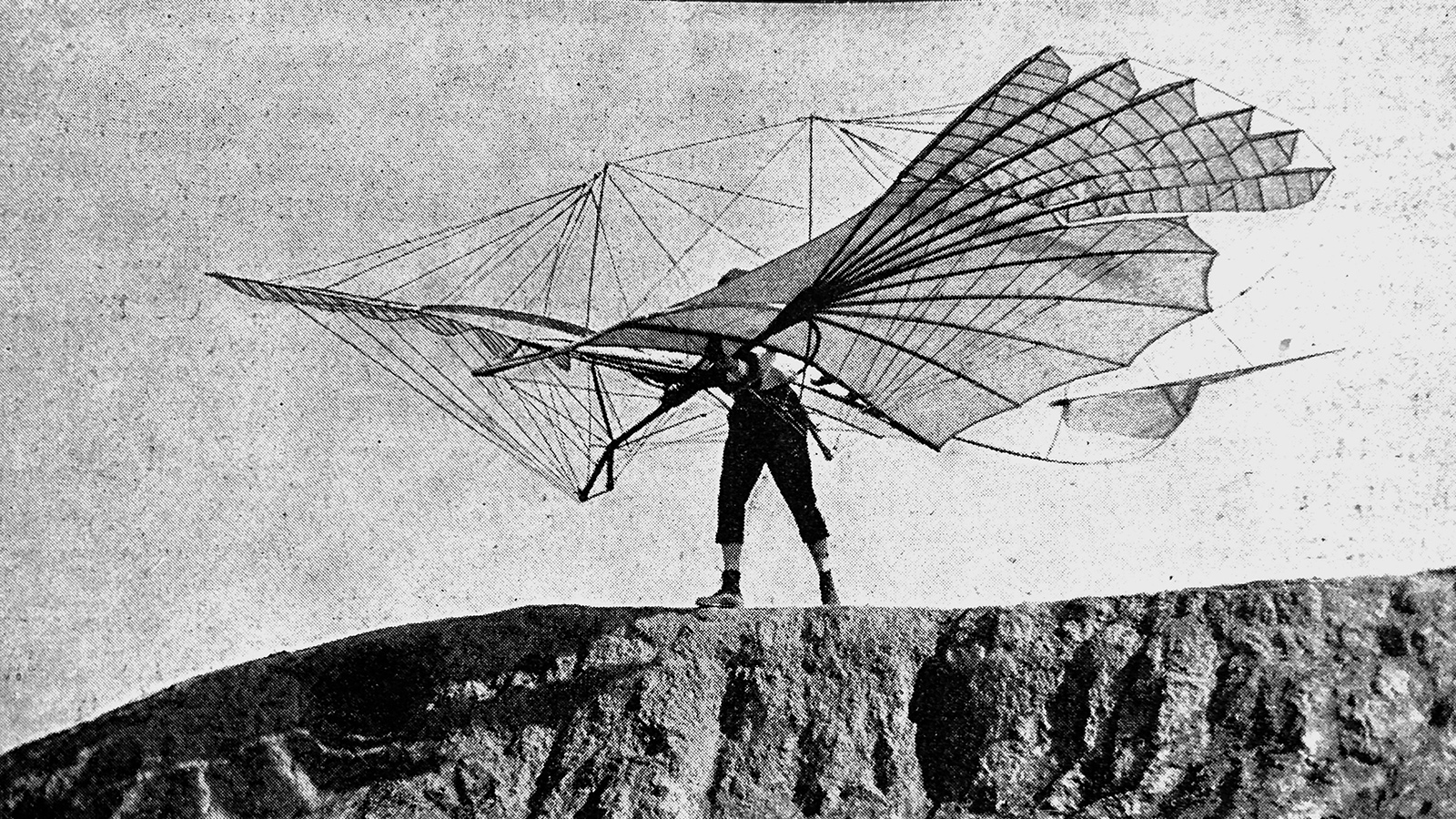Stay Up to Date
Submit your email address to receive the latest industry and Aerospace America news.
Q: You’ve set your time machine for 1894, Germany, Rhinow Hills. You’re standing next to Otto Lilienthal who is about to don his “small wing flapping apparatus.” What pocket-sized craft would you bring along, and what would you say to Lilienthal to convince him that his apparatus will not succeed at carrying him for powered flight?
Draft a response of no more than 250 words and email it by midnight Eastern June 16 to [email protected] for a chance to have it published in the July/August issue.
SURVIVING THE FALL: We asked you what maneuver our hypothetical helicopter pilot employed to save the day after losing power.
Your answers were reviewed by helicopter pilot Clint Balog of Embry-Riddle Aeronautical University.
WINNER: The initial loss of power and torque from the engine reduces the lift of the rotor causing an initial acceleration toward the ground making you feel lighter (although not weightless). Even though the angle of incidence of the rotor blades has not changed yet, the reduced rotational velocity has reduced the lift. The pilot chooses a field to land in and starts the autorotation maneuver. He lowers the handle on the collective toward the floor, which reduces the angle of incidence of the blades to a negative value. The relative wind is moving upward against the rotor and the negative angle of incidence keeps the rotor moving the same direction it had been when powered. The rotor accelerates to an appropriate rotational rate as the helicopter nears the ground.
During this constant descent phase, the crew would feel a normal 1-G acceleration. A great deal of rotational (angular) kinetic energy is stored in the rotor at this point. The pilot raises the collective, increasing the angle of attack of the blades and converting angular momentum into lift. This produces enough lift to arrest the rate of descent and allows a soft landing if the timing is right. The positive G forces greater than one from this lift pushing upward is what the crew feels near the ground. The blades start slowing down as soon as the collective is raised so there are only a few seconds of useful lift available to stop the descent before an uncontrolled descent.
Douglas Dobbin
AIAA senior member
El Paso, Texas; [email protected]
Dobbin performs trajectory and risk analyses at White Sands Missile Range, New Mexico, and is a graduate student studying fixed-wing airplane design in the Aerospace Systems Design Laboratory at Georgia Tech.
Related Posts
Stay Up to Date
Submit your email address to receive the latest industry and Aerospace America news.




